It appears that the number of industrial devices accessible from the internet has risen by 30 thousand over the past three years
It has been nearly three years since we last looked at the number of industrial devices (or, rather, devices that communicate with common OT protocols, such as Modbus/TCP, BACnet, etc.) that are accessible from the internet[1]. Back in May of 2021, I wrote a slightly optimistic diary mentioning that there were probably somewhere between 74.2 thousand (according to Censys) and 80.8 thousand (according to Shodan) such systems, and that based on long-term data from Shodan, it appeared as though there was a downward trend in the number of these systems.
Given that few months ago, a series of incidents related to internet-exposed PLCs with default passwords was reported[2], and CISA has been releasing more ICS-related advisories than any other kind for a while now[3], I thought it might be a good time to go over the current numbers and see at how the situation has changed over the past 35 months.
At first glance, the current number of ICS-like devices accessible from the internet would seem to be somewhere between 61.7 thousand (the number of “ICS” devices detected by Shadowserver[4]) and 237.2 thousand (the number of “ICS" devices detected by Censys[5]), with Shodan reporting an in-between number of 111.1 thousand [6]. It should be noted though, that even if none of these services necessarily correctly detects all OT devices, the number reported by Censys seems to be significantly overinflated by the fact that the service uses a fairly wide definition of what constitutes an “ICS system” and classifies as such even devices that do not communicate using any of the common industrial protocols. If we do a search limited only to devices that use one of the most common protocols that Censys can detect (e.g., Modbus, Fox, EtherNet/IP, BACnet, etc.), we get a much more believable/comparable number of 106.2 thousand[7].
It is therefore probable that the real number of internet-connected ICS systems is currently somewhere between 61 and 111 thousand, with data from Shodan and Censys both showing an increase of approximately 30 thousand from May 2021. It should be noted, though, that some of the detected devices are certain to be honeypots – of the 106.2 thousand systems reported by Censys, 307 devices were explicitly classified as such[8], however, it is likely that the real number of honeypots among detected systems is significantly higher.
If we take a closer look at some of the most often detected industrial protocols, it quickly becomes obvious that – with the exception of BACnet – the data reported by all three services varies significantly between different protocols.
It also becomes apparent that the large difference between the number of ICS systems detected by Shodan and Censys (> 100k) and the much smaller number detected by Shadowserver (61k) is caused mainly by a significantly lower number of detected devices that use Modbus on part of Shadowserver. For comparison, at the time of writing, Censys detects 54,770 internet-exposed devices using this protocol, while Shodan detects 33,036 of such devices, and Shadowserver detects only about 6,300 of them.
While on the topic of Modbus, it is worth noting that the number of ICS-like devices that support this protocol detected by both Shodan and Censys has increased significantly since 2021, and this increase seems to account for most of the overall rise in the number of detected ICS devices.
In fact, if we take a closer look at the changes over time, it is clear that the downward trend, which I mentioned in the 2021 diary, didn’t last too long. Looking at data gathered from Shodan using my TriOp tool[9], it seems that shortly after I published the diary, the number of detected ICS devices rose significantly, and it has oscillated around approximately 100 thousand ever since.
Although data provided by Shodan are hardly exact, the hypothesis that the number of internet-connected ICS devices has not fallen appreciably for at least the last two years seems to be supported by data from Shadowserver, as you may see in the following chart.
Nevertheless, even though there has therefore probably not been any notable decrease in the number of internet-connected ICS devices, this doesn’t mean that there have not been changes in the types of devices and the protocols they communicate with. As the following chart from Shodan shows, these aspects have changed quite a lot over time.
It is also worth mentioning that these charts and the aforementioned numbers describe the overall situation on the global internet, and therefore say nothing about the state of affairs in different countries around the world. This is important since although there may not have been any appreciable decrease in the number of internet-exposed ICS devices globally, it seems that the number of these devices has decreased significantly in multiple countries in the past few years – most notably in the United States, as you may see in the following chart from Shodan (though, it is worth noting that Shadowserver saw only a much lower decrease for the US – from approximately 32 thousand ICS devices to the current 29.5 thousand devices[10]).
Unfortunately, the fact that in some countries, the number of internet-connected ICS devices has fallen also means that there are (most likely) multiple countries where it has just as significantly risen, given that we have not seen an overall, global decrease… In fact, the must be countries where it rose much more significantly, given the aforementioned overall increase of approximately 30 thousand ICS systems detected by both Shodan and Censys globally.
So, while I have ended the 2021 diary stating a hope that the situation might improve in time and that the number of industrial/OT systems accessible from the internet will decrease, I will end this one on a slightly more pessimistic note – hoping that the situation doesn’t worsen just as significantly in the next three years as it did in the past three…
[1] https://isc.sans.edu/diary/Number+of+industrial+control+systems+on+the+internet+is+lower+then+in+2020but+still+far+from+zero/27412
[2] https://therecord.media/cisa-water-utilities-unitronics-plc-vulnerability
[3] https://www.cisa.gov/news-events/cybersecurity-advisories?page=0
[4] https://dashboard.shadowserver.org/statistics/combined/time-series/?date_range=30&source=ics&style=stacked
[5] https://search.censys.io/search?resource=hosts&sort=RELEVANCE&per_page=25&virtual_hosts=EXCLUDE&q=labels%3D%60ics%60
[6] https://www.shodan.io/search?query=tag%3Aics
[7] https://search.censys.io/search?resource=hosts&sort=RELEVANCE&per_page=25&virtual_hosts=EXCLUDE&q=%28labels%3D%60ics%60%29+and+%28services.service_name%3D%60MODBUS%60+or+services.service_name%3D%60FOX%60+or+services.service_name%3D%60BACNET%60+or+services.service_name%3D%60EIP%60+or+services.service_name%3D%60S7%60+or+services.service_name%3D%60IEC60870_5_104%60%29
[8] https://search.censys.io/search?resource=hosts&virtual_hosts=EXCLUDE&q=%28%28labels%3D%60ics%60%29+and+%28services.service_name%3D%60MODBUS%60+or+services.service_name%3D%60FOX%60+or+services.service_name%3D%60BACNET%60+or+services.service_name%3D%60EIP%60+or+services.service_name%3D%60S7%60+or+services.service_name%3D%60IEC60870_5_104%60%29%29+and+labels%3D%60honeypot%60
[9] https://github.com/NettleSec/TriOp
[10] https://dashboard.shadowserver.org/statistics/combined/time-series/?date_range=other&d1=2022-04-23&d2=2024-04-22&source=ics&geo=US&style=stacked
-----------
Jan Kopriva
@jk0pr | LinkedIn
Nettles Consulting
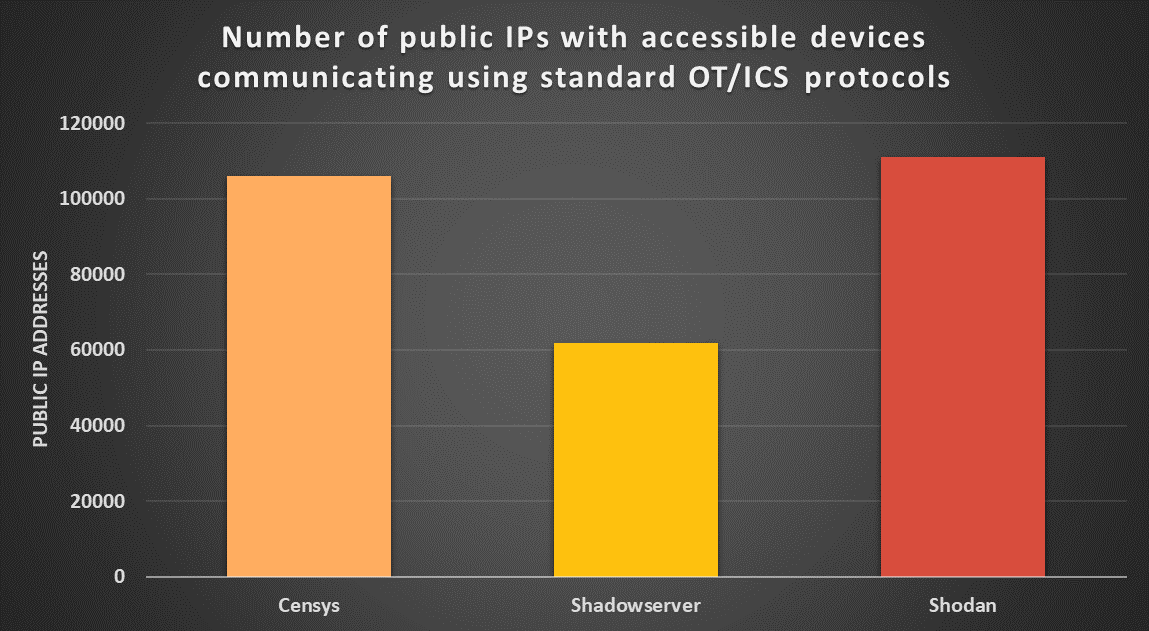
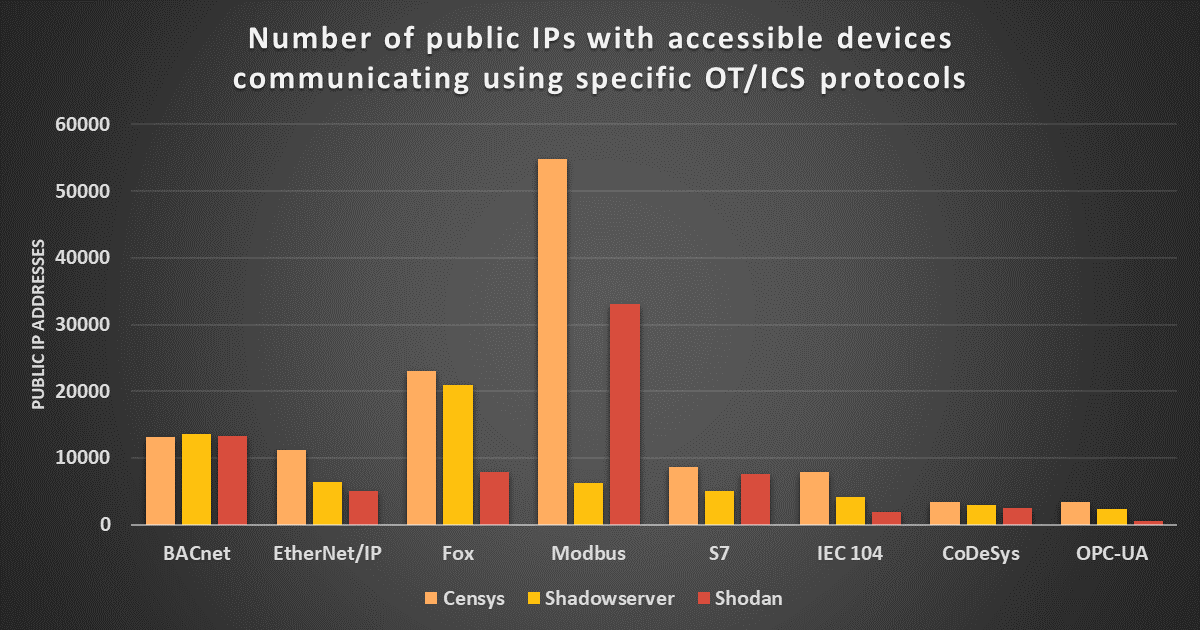
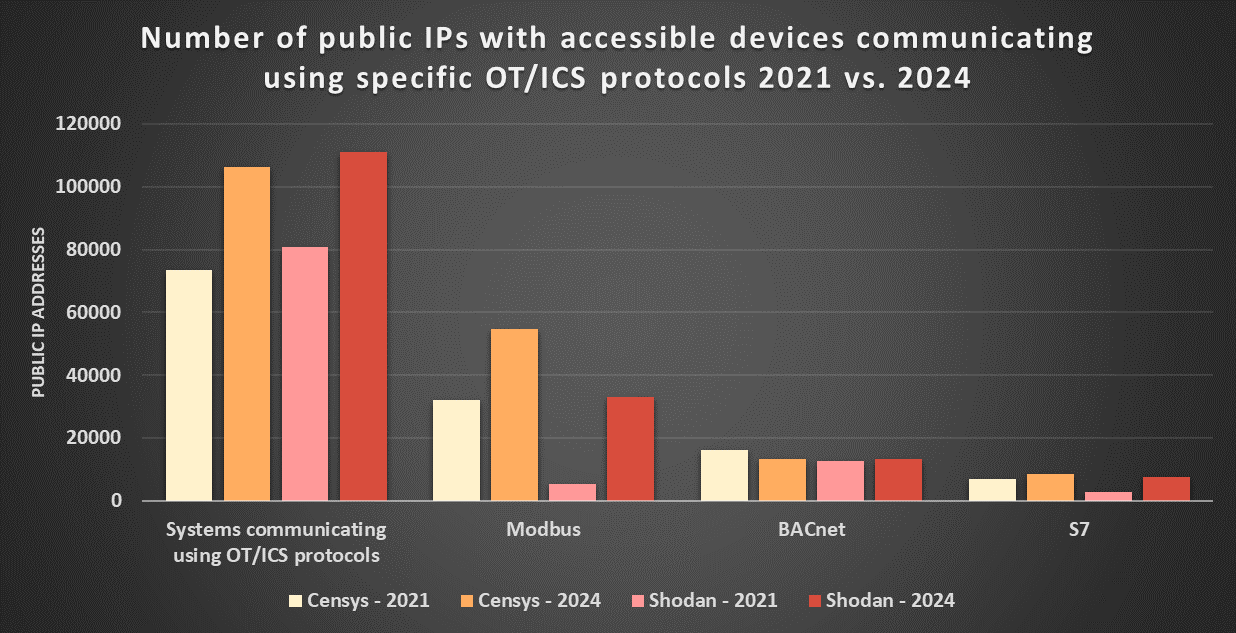
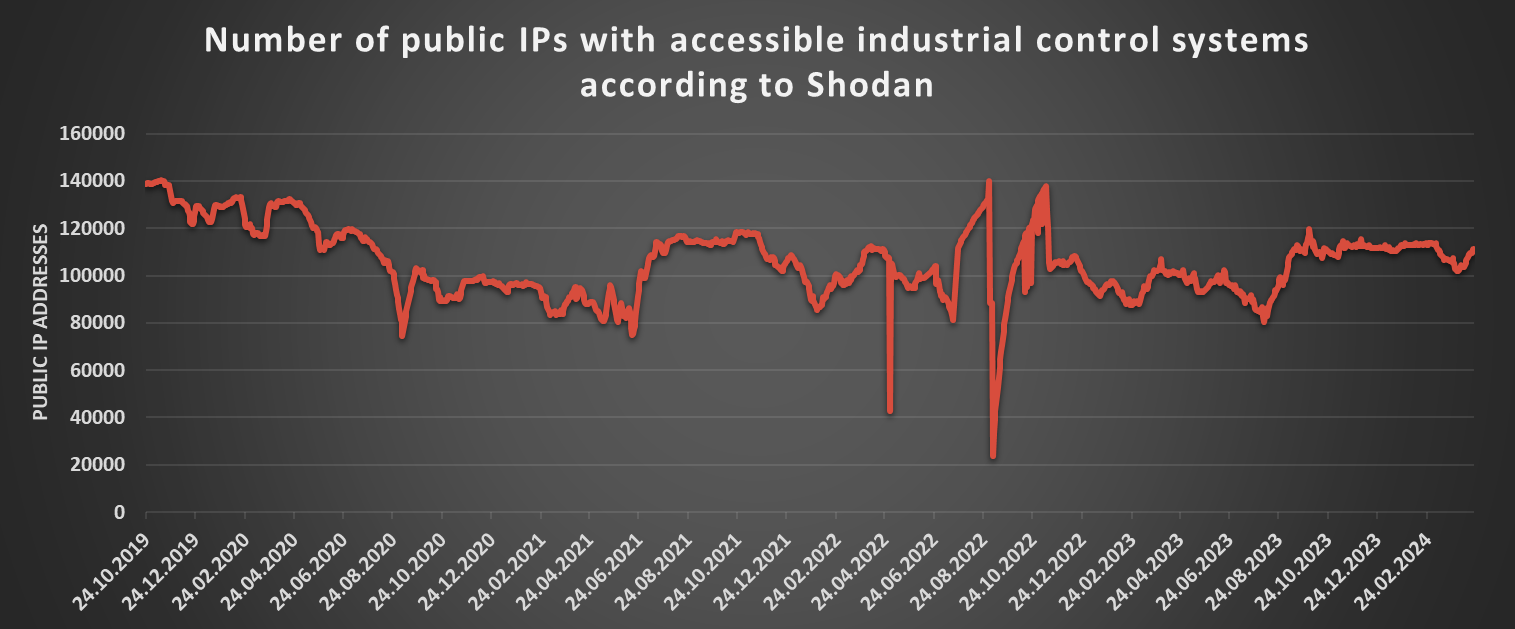

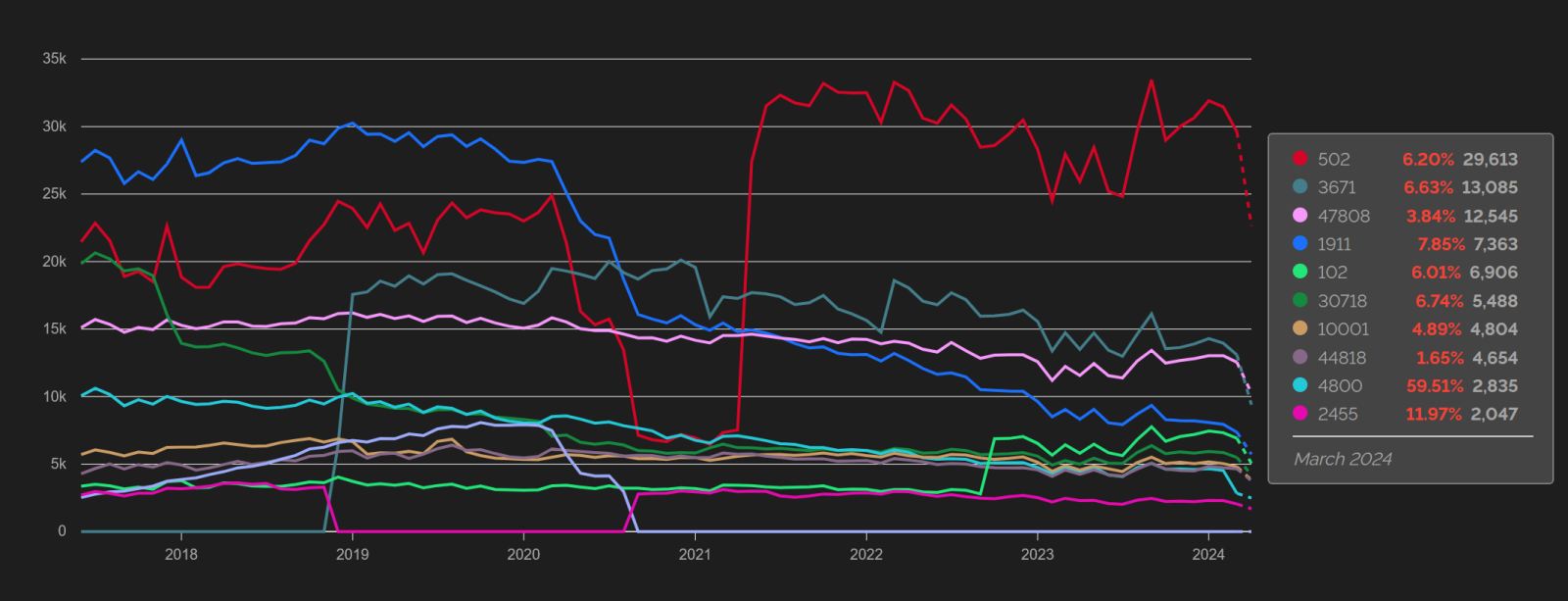
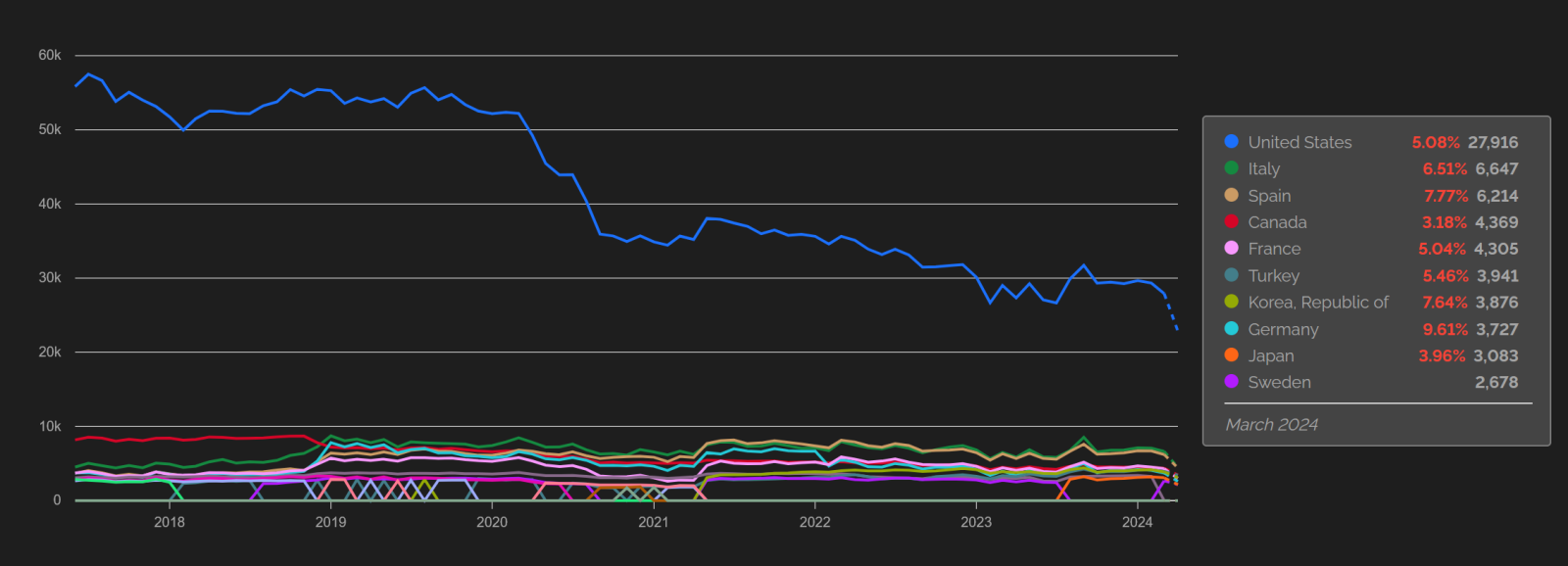

Comments